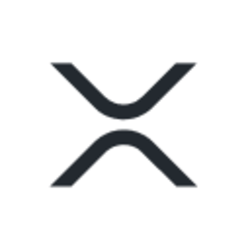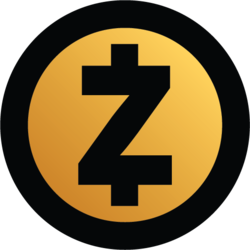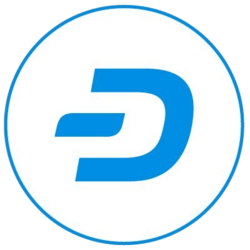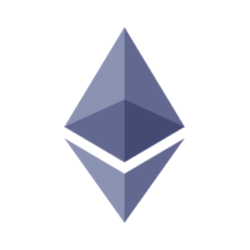
XLMStellar Lumens
XLM
Stellar Lumens69,225
Mkt Cap
$8.05B24H Volume
$128.63MFDV
$12.53BCirc Supply
32.13BTotal Supply
50BXLM Fundamentals
Max Supply
50B7D High
$0.30987D Low
$0.256924H High
$0.262524H Low
$0.2505All-Time High
$0.8756All-Time Low
$0.0005XLM Prices
XLM / USD
$0.2504XLM / EUR
€0.2154XLM / GBP
£0.1904XLM / CAD
CA$0.3514XLM / AUD
A$0.3842XLM / INR
₹22.21XLM / NGN
NGN 360.87XLM / NZD
NZ$0.4437XLM / PHP
₱14.78XLM / SGD
SGD 0.3249XLM / ZAR
ZAR 4.28Best Crypto to Buy as Franklin Templeton Extends Benji to $6T Canton Network
What to Know: Canton’s $6T processed assets and $280B daily repo volumes show tokenization has graduated from pilots to real transaction flow. Franklin Templeton extending Benji to Canton tightens the loop between regulated funds, collateral networks, and on-chain settlement. Bitcoin Hyper ($HYPER) targets Bitcoin’s biggest gap – throughput – while Best Wallet Token ($BEST) leans into UX; Stellar ($XLM) anchors cross-border payments with deep listings. For presale exposure, $HYPER offers higher beta to Layer-2 demand; $BEST ties to wallet utility; $XLM provides listed liquidity. Franklin Templeton just plugged its Benji tokenization stack into the Canton Network, the institution-first blockchain linking collateral, settlement, and regulated markets. The move expands Benji’s reach from public networks into Canton’s private, permissioned rails where banks and trading firms already exchange tokenized assets. It’s a small line in a press release, but a big nudge toward mainstream on-chain finance. This matters, because Canton has scaled beyond pilot theater. Applications on the network are handling more than $6T in tokenized assets and north of $280B in daily U.S. Treasury repo transactions, a scale that signals real throughput rather than slideware. If tokenization is the sticky bridge between TradFi and crypto, Canton is where that bridge is getting traffic – and Benji now sits on it. For investors, this is a credibility signal. Regulated fund shares moving on a network that already processes institutional collateral give tokenized money funds and RWA collateral a clearer route into trading workflows. 💡 That’s a tailwind for projects positioned around Bitcoin scalability, self-custody user experience, and cross-border payments – three narratives with actual users and obvious product-market fit. Through that lens, three names stand out today as the best crypto to buy now. Read on as we delve into Bitcoin Hyper ($HYPER) and Best Wallet Token ($BEST), both in presale, plus Stellar ($XLM) on the listed side. 1. Bitcoin Hyper ($HYPER) – Bitcoin Layer-2 With Throughput Ambitions When regulated funds go on-chain, low-latency settlement and high-capacity rails stop being optional. Bitcoin Hyper’s ($HYPER) pitch is simple: bring Solana-style speed to Bitcoin via a Layer-2 that batches, executes, and settles back to the Layer-1. The presale broke the $27M milestone today, suggesting there’s real appetite for a throughput-first Bitcoin Layer-2 rather than just another meme coin with orange branding. $HYPER is currently priced at $0.013265 with 43% staking APY. ➡️ Check out our step-by-step guide to buying $HYPER. In simple words, Hyper relies on tools like the Solana Virtual Machine and a canonical bridge to make the Bitcoin ecosystem more scalable, cheaper, and more performant, which would qualify it for mainstream adoption. If the Benji-to-Canton momentum translates into higher institutional tolerance for on-chain collateral, Layer-2s enabling $BTC-adjacent activity benefit first. The near-term math checks out. 💰 Our price prediction for $HYPER suggests a potential 2026 high near $0.08625 as core roadmap items – initial dApps, listings, and a DAO – ship. From today’s $0.013265 presale price, that’s roughly ~6.5x to the 2026 high if execution stays on track. These stats alone recommend $HYPER as one of the best crypto to buy today. This isn’t a free lunch; delivery risk is real and competition across Bitcoin Layer-2s is heating up. But the asymmetry suits presale math, and the story aligns with the market’s push toward on-chain collateral and instant settlement. 🚀 Don’t delay – buy your $HYPER today. 2. Best Wallet Token ($BEST) – Utility-First Wallet Token With Presale Traction Canton’s growth underscores a simple truth: the next wave of users will need better UX for multi-chain portfolios, bridging, and payments. Best Wallet Token ($BEST) centers that need. It’s the native asset for the self-custody Best Wallet app ecosystem that folds in a DEX, cross-chain swaps, and a card product. The presale has reached the 17M raised, with the token currently priced at $0.025935. That’s not froth; that’s users voting for utility and distribution. The Best Wallet ecosystem offers non-custodial services and plans to ‘capture 40% of the crypto wallet market share by the end of 2026’. The roadmap details the exact strategy at work, which involves milestones like 60+ chain support, a fiat offramp, and the Best Card, to name a few. 💰 Our price prediction for $BEST sees a potential end-2025 range topping around $0.035215 and a 2026 potential high near $0.05106175 if the roadmap lands – wallet growth, card rollout, and deeper integrations. From the current presale price, that’s ~36%–90% upside across the two years, with compounding utility rather than pure narrative carrying the lift. Yes, execution and listings timing matter. Still, with tokenized funds and RWAs normalizing, a wallet that abstracts network sprawl while offering real-world spend hooks is exactly what many newcomers will need. ➡️ Our guide to buying $BEST will help you navigate the purchase process. But hurry – the presale ends in two weeks. 🚀 Buy $BEST today and stake it for 77% APY while you still can. 3. Stellar ($XLM) – Payments Rail With Exchange Liquidity Today Stellar ($XLM) remains one of the most proven options for compliant cross-border transfers and fiat on-/off-ramps, now supported by Soroban smart contracts to widen its developer surface. Recent figures show $XLM at $0.2921 with a market cap above $9.3B, and the asset is broadly listed, including on Binance and Coinbase – meaning price discovery and liquidity are not theoretical. In a world where tokenized fund shares and repo collateral settle on permissioned chains, there’s still a huge role for public infrastructure that lets fintechs, remittance players, and stablecoin issuers move value across borders. ⚙️ Stellar’s blend of speed, low fees, and established exchange coverage keeps it relevant as the tokenization stack grows above it. Holders also get a clean story: payments first, programmability now, and plenty of listings to trade the cycle. With $XLM above $0.29 at the time of writing and an all-time ROI north of 9,677%, this one seems to be a banger. 🚀 Buy $XLM on Binance and other leading platforms today. Recap: Franklin Templeton’s Canton integration is the headline, but the subtext is bigger: regulated liquidity is moving on-chain at industrial scale. That is the connective tissue behind $HYPER’s Layer-2 throughput pitch, $BEST’s UX-led approach to self-custody, and $XLM’s liquid payments rail. If the question is the best crypto to buy into this tokenized-finance backdrop, these three sit squarely in the narrative with distinct roles and risk profiles. Disclaimer: This isn’t financial advice. Always do your own research before making any investment decision. Authored by Aaron Walker, NewsBTC: https://www.newsbtc.com/news/best-crypto-to-buy-franklin-templeton-canton-hyper-best-stellar
newsbtc·3d ago


Revolutionary Tokenize Renewable Energy Financing: Turbo Energy’s Game-Changing Blockchain Pilot
BitcoinWorld Revolutionary Tokenize Renewable Energy Financing: Turbo Energy’s Game-Changing Blockchain Pilot Imagine investing in clean energy projects as easily as buying digital assets. That’s exactly what Turbo Energy is making possible with their groundbreaking initiative to tokenize renewable energy financing. This Nasdaq-listed company is bridging the gap between traditional energy infrastructure and cutting-edge blockchain technology. What Does It Mean to Tokenize Renewable Energy? Tokenization transforms real-world assets into digital tokens on a blockchain. When we tokenize renewable energy projects, we create digital representations of ownership or investment rights. These tokens can then be traded, sold, or held like other digital assets. The process brings unprecedented transparency and accessibility to green energy investments. Turbo Energy’s pilot focuses specifically on hybrid renewable energy systems. These systems combine multiple clean energy sources like solar and wind power. By using blockchain technology, the company aims to democratize access to sustainable energy investments that were previously limited to large institutions. How Will This Transform Energy Financing? The traditional energy financing model often involves complex paperwork and high barriers to entry. However, when you tokenize renewable energy assets, you unlock several powerful benefits: Global accessibility – Investors worldwide can participate Fractional ownership – Smaller investment amounts become possible Transparent tracking – Blockchain provides clear audit trails Liquidity – Digital tokens can be traded more easily The collaboration with Taurus and Stellar Development Foundation ensures robust technical infrastructure. Taurus brings digital asset expertise, while Stellar provides the blockchain network for efficient transactions. Why Is This Pilot So Important Now? Climate change concerns are driving urgent demand for renewable energy solutions. Meanwhile, blockchain technology has matured enough to handle real-world asset tokenization. The timing is perfect to tokenize renewable energy projects at scale. This initiative addresses a critical funding gap in the transition to clean energy. Many promising renewable projects struggle to secure financing through conventional channels. By creating blockchain-based bonds, Turbo Energy opens new capital sources for decentralized energy systems. The pilot represents a significant step toward mainstream adoption of tokenized real-world assets. Success could inspire similar projects across the energy sector and beyond. What Challenges Might This Approach Face? While the potential is enormous, several hurdles remain. Regulatory frameworks for tokenized assets are still evolving in many jurisdictions. Market education is another challenge – investors need to understand both the energy and blockchain aspects. Technical integration between traditional energy infrastructure and blockchain systems requires careful planning. However, the partnerships with established firms like Taurus help mitigate these risks. The Stellar network’s focus on cross-border payments also addresses potential liquidity concerns. The Future of Green Energy Investment This pilot could fundamentally change how we fund and own renewable energy infrastructure. As more companies learn to tokenize renewable energy assets, we might see a global marketplace for clean energy investments. Individual investors could eventually own pieces of solar farms or wind turbines worldwide. The transparency of blockchain technology ensures that investors can verify the environmental impact of their contributions. This addresses greenwashing concerns that sometimes plague traditional sustainable investments. Conclusion: A New Era for Energy Finance Turbo Energy’s initiative to tokenize renewable energy financing marks a pivotal moment in both energy and financial markets. By combining blockchain innovation with sustainable energy needs, they’re creating a blueprint for future green investments. This approach could accelerate our transition to clean energy while providing new investment opportunities. The success of this pilot could inspire widespread adoption across the energy sector. As blockchain technology continues to evolve, we may see even more creative applications for tokenizing real-world assets. The future of energy financing looks brighter – and more decentralized – than ever before. Frequently Asked Questions What exactly does it mean to tokenize renewable energy? Tokenizing renewable energy means converting ownership or investment rights in clean energy projects into digital tokens on a blockchain. These tokens represent fractional ownership and can be traded like other digital assets. How can investors benefit from this approach? Investors gain access to previously inaccessible green energy projects, enjoy potential returns from renewable energy generation, and benefit from the liquidity and transparency that blockchain technology provides. Is this type of investment regulated? Regulatory frameworks are still developing worldwide. Turbo Energy is working within existing securities regulations and collaborating with regulatory-compliant partners to ensure proper compliance. What makes blockchain suitable for energy financing? Blockchain offers transparency, security, and efficiency in recording transactions. It enables fractional ownership and global accessibility while reducing administrative costs through smart contracts. Can small investors participate in these tokenized energy projects? Yes, one of the main advantages of tokenization is enabling fractional ownership. This allows smaller investors to participate in projects that would traditionally require large capital commitments. How does this help accelerate renewable energy adoption? By opening new funding channels and making renewable energy investments more accessible, tokenization can direct more capital toward clean energy projects, speeding up the transition from fossil fuels. Found this insight into renewable energy tokenization valuable? Share this article with others interested in the future of green energy and blockchain technology. Help spread awareness about how innovative financing models can accelerate our transition to sustainable energy sources. To learn more about the latest blockchain trends, explore our article on key developments shaping digital assets institutional adoption. This post Revolutionary Tokenize Renewable Energy Financing: Turbo Energy’s Game-Changing Blockchain Pilot first appeared on BitcoinWorld .
bitcoinworld·5d ago

XRP Rallies 11% Amid Ripple’s $500M Raise, Hinting at Downtrend Reversal
XRP crypto is among the best performers today, surging 11.4% in the last 24 hours to peak over $2.56, driven by market enthusiasm following Ripple’s $500 million funding raise. This
coinotag·6d ago

Chasing the Next 1000x? BullZilla Dominates the Best Crypto Presales With 1000x Potential While Stellar and BCH Fight to Stay Relevant
Stellar and BCH rise with solid adoption while BullZilla leads the best crypto presales with 1000x potential. Explore ROI stats and presale growth now. Read original article on coinlineup.com
CoinLineup·10d ago

UN agency to launch blockchain education, advisory programs for governments
The United Nations will launch a government-focused blockchain academy and a UN-led advisory body designed to guide countries through the implementation of real-world blockchain deployments.
Cointelegraph.com News·10d ago

BullZilla Leads With 31B Tokens Sold as The Top Crypto To Buy In November, While Stellar and Monero Prove Stability
Have you ever noticed how crypto traders can panic one day and celebrate the next, depending on whether Bitcoin sneezes or pumps a few percent? The fourth quarter always brings market drama with ETF flows shifting attention and regulators pushing new headlines that keep volatilit...
The Bit Journal·10d ago

Stellar's XLM Surges Amid Significant Trading Volume Increase
Stellar XLM breaks resistance at $0.281 with a 59.61% volume surge, indicating institutional interest. Read original article on tokentopnews.com
TokenTopNews·10d ago

Franklin Templeton Introduces Tokenized Money-Market Fund in Hong Kong
Franklin Templeton launches Hong Kong's first tokenized money-market fund, integrating with HKMA's Fintech 2030 initiative. Read original article on bitcoininfonews.com
Bitcoin Info News·11d ago

Did You Miss Stellar’s Rocket? — Now La Culex Is Gunning for the Next 1000x Crypto Presale Crown
La Culex is creating a storm as the next 1000x crypto presale. Don’t miss your shot before the price climbs, this could be your move to start now. Read original article on coinlive.me
CoinLive.me·11d ago

Best Cryptos to Invest in November? BullZilla Roars Past $1M, While XRP Eyes ETF Approval and Stellar Fights the Trend
Did you hear the joke about crypto investors checking charts every minute? It is called doing “research” while sweating and hoping the candles go up. The final quarter of the year always brings these roller coaster emotions since ETFs, central bank updates, and global regulation ...
Crypto Economy·11d ago
Sentiment
Indicates whether most users posting on a symbol’s stream over the last 24 hours are fearful or greedy.
0
25
50
75
100
Extreme
Fear
Neutral
Greed
Extreme
Fear
Greed
N/A
Last score
N/A
1 day ago
Sign Up / Log In
1 week ago
Sign Up / Log In
1 month ago
Sign Up / Log In
3 months ago
Sign Up / Log In
6 months ago
Sign Up / Log In
1 year ago
Sign Up / Log In
Message Volume
Measures the total amount of chatter on a stream over the last 24 hours.
0
25
50
75
100
Extremely
Low
Normal
High
Extremely
Low
High
N/A
Last score
N/A
1 day ago
Sign Up / Log In
1 week ago
Sign Up / Log In
1 month ago
Sign Up / Log In
3 months ago
Sign Up / Log In
6 months ago
Sign Up / Log In
1 year ago
Sign Up / Log In
Participation Ratio
Measures the number of unique accounts posting on a stream relative to the number of total messages on that stream.
0
25
50
75
100
Extremely
Low
Normal
High
Extremely
Low
High
N/A
Last score
N/A
1 day ago
Sign Up / Log In
1 week ago
Sign Up / Log In
1 month ago
Sign Up / Log In
3 months ago
Sign Up / Log In
6 months ago
Sign Up / Log In
1 year ago
Sign Up / Log In
AboutThe Stellar network is an open source, distributed, and community owned network used to facilitate cross-asset transfers of value. Stellar aims to help facilitate cross-asset transfer of value at a fraction of a penny while aiming to be an open financial system that gives people of all income levels access to low-cost financial services. Stellar can handle exchanges between fiat-based currencies and between cryptocurrencies. Stellar.org, the organization that supports Stellar, is centralized like XRP and meant to handle cross platform transactions and micro transactions like XRP. However, unlike Ripple, Stellar.org is non-profit and their platform itself is open source and decentralized. Stellar was founded by Jed McCaleb in 2014. Jed McCaleb is also the founder of Mt. Gox and co-founder of Ripple, launched the network system Stellar with former lawyer Joyce Kim. Stellar is also a payment technology that aims to connect financial institutions and drastically reduce the cost and time required for cross-border transfers. In fact, both payment networks used the same protocol initially. Distributed Exchange Through the use of its intermediary currency Lumens (XLM), a user can send any currency that they own to anyone else in a different currency. For instance, if Joe wanted to send USD to Mary using her EUR, an offer is submitted to the distributed exchange selling USD for EUR. This submitted offer forms is known as an order book. The network will use the order book to find the best exchange rate for the transaction in-order to minimize the fee paid by a user. This multi-currency transaction is possible because of "Anchors". Anchors are trusted entities that hold people’s deposits and can issue credit. In essence, Anchors serves as the bridge between different currencies and the Stellar network. Lumens (XLM) Lumens are the native asset (digital currency) that exist on the Stellar network that helps to facilitate multi-currency transactions and prevent spams. For multi-currency transactions, XLM is the digital intermediary that allows for such a transaction to occur at a low cost. In-order to prevent DoS attacks (aka spams) that would inevitably occur on the Stellar network, a small fee of 0.00001 XLM is associated with every transaction that occurs on the network. This fee is small enough so it does not significantly affect the cost of transaction, but large enough so it dissuades bad actors from spamming the network. Prior to Protocol 12, Stellar had a built-in inflation mechanism conceived to allow account holders to collectively direct inflation-generated lumens toward projects built on Stellar. As the network evolved and grew, it became increasingly clear that inflation wasn’t working as intended — account holders either didn’t set their inflation destination or joined inflation pools to claim the inflation themselves, and the operational costs associated with inflation payments continued to rise — and so a protocol change to disable inflation was proposed, implemented, voted on by validators, and ultimately adopted as part of a network upgrade. The inflation operation is now deprecated. https://developers.stellar.org/docs/glossary/inflation/
DetailsLinks
Source
Categories
Coinbase 50 IndexGMCI 30 IndexGMCI IndexMade in USAReal World Assets (RWA)Smart Contract PlatformStellar Ecosystem
Date
Market Cap
Volume
Close
November 16, 2025
$8.05B
$128.63M
---
November 16, 2025
$8.34B
$117.63M
---
November 15, 2025
$8.37B
$273.42M
$0.2601
November 14, 2025
$8.66B
$350.28M
$0.2689
November 13, 2025
$8.9B
$185.58M
$0.2771
November 12, 2025
$9.05B
$199.68M
$0.2816
November 11, 2025
$9.65B
$298.4M
$0.3005
November 10, 2025
$9.15B
$184.16M
$0.2855
November 09, 2025
$9.09B
$174.81M
$0.2833
November 08, 2025
$9.37B
$316.48M
$0.2917
Poll
What are you doing with Bitcoin (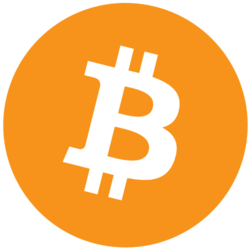 $BTC) right now?
$BTC) right now?
 $BTC) right now?
$BTC) right now?Buying
Holding
Selling or trimming
Watching from the sidelines



